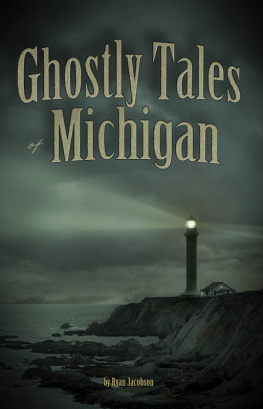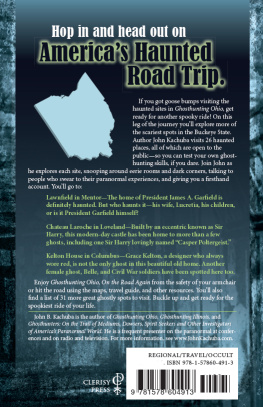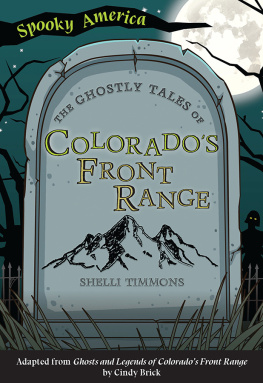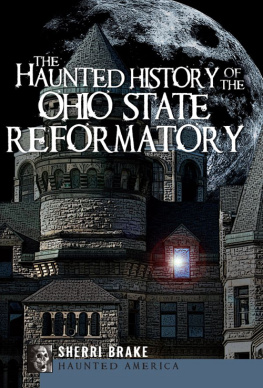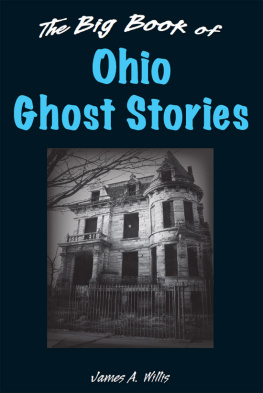

Published by Arcadia Childrens Books
A Division of Arcadia Publishing
Charleston, SC
www.arcadiapublishing.com
Copyright 2021 by Arcadia Childrens Books
All rights reserved
Spooky America is a trademark of Arcadia Publishing, Inc.
First published 2021
E-Book edition 2021
ISBN 978-1-4396-7350-8
Library of Congress Control Number: 2021938345
Print edition ISBN: 978-1-4671-9819-6
NOTE: Chapter 4 contains updated information regarding the capture of Frank Freshwaters which was not included in the original book.
Notice: The information in this book is true and complete to the best of our knowledge. It is offered without guarantee on the part of the author or Arcadia Publishing. The author and Arcadia Publishing disclaim all liability in connection with the use of this book.
All rights reserved. No part of this book may be reproduced or transmitted in any form whatsoever without prior written permission from the publisher except in the case of brief quotations embodied in critical articles and reviews.
All images courtesy of Shutterstock.com; p. 23 Sandra Foyt/Shutterstock.com;
p. 30 Mariah97/Shutterstock.com; pp. 5253, 106107 ehrlif/Shutterstock.com;
pp. 9697 arthurgphotography/Shutterstock.com..


TABLE OF CONTENTS
MAP KEY
| 1 | Mansfield, Ohio |
| 2 | Reformatory Road |
| 3 | Site of Ohio Soldiers and Sailors Home |
| 4 | Ohio State Reformatory |
| 1 | West Wing |
| 2 | Solitary Confinement |
| 3 | Cell Blocks |
| 4 | Administration and Warden's Office |
| 5 | Warden's Apartment |
| 6 | Commisary |
| 7 | Yard |
| 8 | Dining Hall |
| 9 | Hospital |
| 10 | High School |
| 11 | Shoe and Print Shops |
| 12 | Furniture Factory |



Introduction
The Ohio State Reformatory (often referred to as the OSR) has a dark, foreboding presence that looms above the farm fields of Mansfield, Ohio. With its turrets, towering stone walls, and sprawling grounds, it looks more like a castle than a former prison.
At more than 250,000 square feet (thats the size of five football fields), the reformatory is one of the five largest castle-like buildings in the United States. It is listed in the Guinness Book of World Records for having the largest free-standing cell block in the worldan impressive six stories tall.

Opened in 1886, over the course of the 104 years it served as a reformatory, the OSR was home to 155,000 prisoners. For the most part, prisons are viewed as places of punishment. But the OSR was built with a different purpose: to motivate prisoners to become better peopleto reform them. There was a farm, a print shop, and a shoe factory, where prisoners could work. And prisoners could take classes in engineering, math, history, and English. There were musical and sports programs.
But the OSR was still a prison. Cell blocks were cramped and crowded. And at night, cell doors clanged shut on the cell blocks and guards patrolled with jingling rings of keys.
As the decades passed, the OSR became less of a reformatory and more of a prison. By 1933, the cell blocks were overflowing with inmates. By 1978, about 2,200 prisoners were being held in one section of the prison meant for 1,200 people.
Because of this, conditions at OSR were brutal and often inhumane. Eventually, the authorities ordered the OSR closed forever. In December 1990, the last inmates walked out of their cells, bound for the nearby Mansfield Correctional Institute. In 1995, the OSR was turned into a museum for any tourist brave enough to walk the halls and sit for a while in a cell block.
All around, the whispers of the prisoners who lived and died there fill the air. What are they saying? What do they want us to know? What memories lay within the abandoned cellsand what traces did they leave behind?
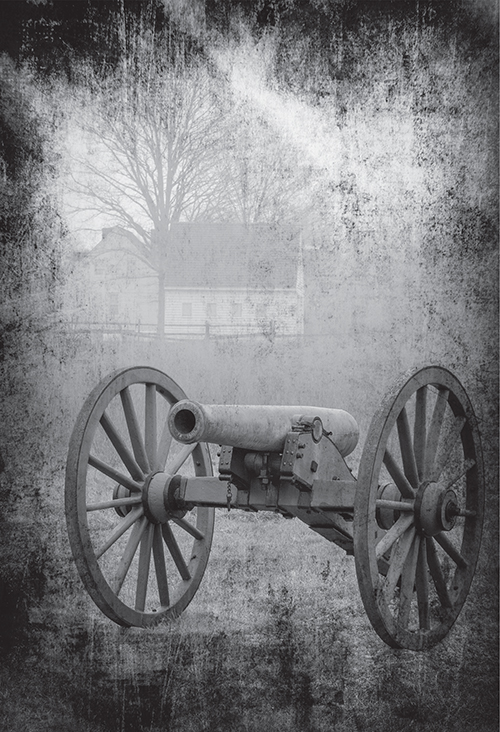

Bloody Beginnings
Before the OSR existed, the patch of ground where it now sits had its own disturbing history. During the late 1700s and the early 1800s, this area of northeastern Ohio was the site of several bloody battles between Native Americans and early settlers.
As with any fledgling frontier area in early America, Mansfield was troubled by violence, death, and bloodshed. The area was the battleground where Native Americans and settlers clashed as the settlers attempted to make their way west across the land of the indigenous tribes. Raids, massacres, disease, starvation, and loneliness plagued many settlers in this new wilderness. Its safe to say that no one in the area, whether Native American or hopeful settler, was untouched by death. And it may be that some of those who lost their lives never moved on.
Not all settlers who passed through this part of Ohio were wary of the Native Americans in the area. One such notable resident was John Chapman, better known as Johnny Appleseed. He was a bit of an eccentric man, and he made his home in the area now known as Mansfield, Ohio. During his lifetime, he planted thousands of apple trees as he traveled through the area. Johnny Appleseed never married, and he told friends that he believed there would be two spirits in the afterlife who would take care of him if he stayed single while on earth. Its said that perhaps Johnny Appleseed didnt find those two spirits to look after him, because people claim that hes come back to continue to walk through the apple orchards he planted.

As the years passed, conflicts between Native Americans and settlers became less frequent. But other changes came to the piece of land that would be the home of the OSR.
As the 1860s began, the Civil War split the country in two. Ohio was a Union state, and a training camp for Union soldiers was established near Mansfield. It was named Camp Mordecai Bartley, after the eighth governor of Ohio, and many men livedand diedon its grounds.
Next page




